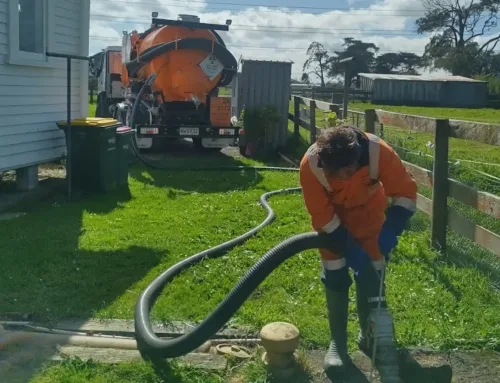Getting The Reclaim Waste To Work
Getting The Reclaim Waste To Work
Blog Article
The Ultimate Guide To Reclaim Waste
Table of ContentsLittle Known Facts About Reclaim Waste.Our Reclaim Waste StatementsReclaim Waste Fundamentals ExplainedOur Reclaim Waste DiariesReclaim Waste Things To Know Before You Buy
Residential sewage waste refers to the waste and items from a domestic septic storage tank. The proper administration and disposal of domestic sewer waste call for fluid waste to be moved to a sewer treatment plant where the appropriate methods and equipment are applied to purify and dispose of waste.
Business waste usually consists of possible hazards, such as flammable products or a combination of liquid and strong waste items, and requires a much more sophisticated and thorough disposal process. The disposal of business waste commonly involves the purification of waste prior to transport to make certain risk-free and appropriate disposal. Industrial waste is created from results and overflow of industrial processes and production.
This kind of waste can not utilize the exact same sewage administration transportation or procedures as septic or business fluids. The commercial waste monitoring process requires the evaluation and testing of liquid waste prior to it goes through the disposal procedure (liquid waste disposal). Runoff waste is the liquid waste that originates from runoff and excess stormwater in very inhabited areas or cities
Runoff waste can trigger contamination and flooding if not handled appropriately. Guaranteeing appropriate waste administration can stop disasters and minimize ecological harm.
Indicators on Reclaim Waste You Should Know
Contact PROS Solutions today to find out concerning our waste management and disposal services and the appropriate ways to take care of the fluid waste you create.
(https://www.anyflip.com/homepage/imqzz#About)Do you recognize what happens to your water when you end, flush the bathroom or drain the cleaning maker? No? Well, it deserves recognizing. This supposed 'wastewater' is not only a crucial source however, after therapy, will certainly be released to our land, rivers or the ocean. Made use of water from commodes, showers, baths, kitchen sinks, washings and commercial procedures is referred to as wastewater.

water utilized to cool machinery or tidy plant and devices). Stormwater, a type of wastewater, is overflow that streams from farming and urban areas such as roofing systems, parks, yards, roads, paths and gutters right into stormwater drains pipes, after rainfall. Stormwater flows without treatment directly to neighborhood creeks or rivers, ultimately getting to the sea.
The Ultimate Guide To Reclaim Waste
In Queensland, most wastewater is dealt with at sewage treatment plants. Wastewater is transported from residential or commercial websites via a system of sewage systems and pump terminals, known as sewage reticulation, to a sewer treatment plant.
The Division of Natural Resources recommends local federal governments about managing, operating and maintaining sewerage systems and treatment plants. In unsewered locations, local governments might call for householders to set up specific or household sewer therapy systems to More hints deal with residential wastewater from bathrooms, kitchen areas, restrooms and laundries. The Division of Natural Resources authorises making use of house systems when they are verified to be effective.
Most stormwater obtains no treatment. In some new communities, therapy of some stormwater to remove litter, sand and crushed rock has started using gross toxin traps. Wastewater therapy happens in 4 stages: Removes strong matter. Bigger solids, such as plastics and other things incorrectly discharged to sewage systems, are eliminated when wastewater is travelled through displays.
Wastewater then streams into huge storage tanks where solids settle and are eliminated as sludge. Oil and residue are skimmed from the surface. Utilizes tiny living organisms recognizes as micro-organisms to break down and get rid of staying liquified wastes and fine fragments. Micro-organisms and wastes are incorporated in the sludge. Gets rid of nitrogen and phosphorus nutrients that might cause algal blossoms in our waterways and intimidate aquatic life.
An Unbiased View of Reclaim Waste
Nutrient elimination is not offered at all sewage treatment plants because it calls for pricey specialized devices. Clear liquid effluent created after treatment may still consist of disease-causing micro-organisms - liquid waste removal melbourne.

This generally suggests wastewater has actually to be dealt with or pollutants removed before it can be released to waterways. The majority of wastewater flows into the sewerage system. Under the Act, regional governments administer authorizations and licences for environmentally relevant activities (Ages) involving wastewater releases that might have a regional effect. The division administers approvals and licences to ERAs entailing wastewater releases that might have a local or statewide effect.
How Reclaim Waste can Save You Time, Stress, and Money.
Monitoring gives factual information regarding water quality and can validate that permit conditions are being satisfied. The details obtained via tracking gives the basis for making water quality decisions.
Report this page